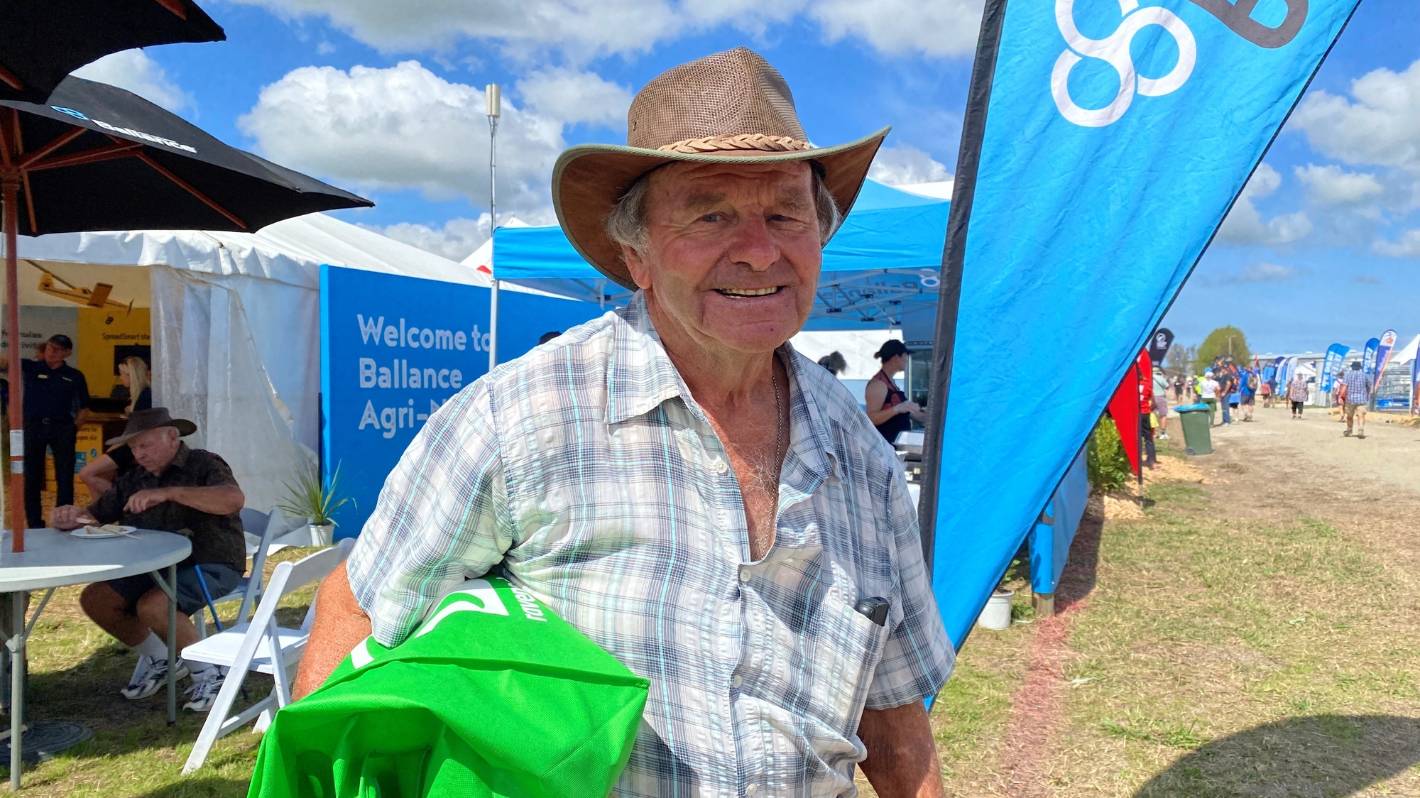Denise Piper/Stuff
Third-generation Northland farmer Bill Hilliam says he has never seen anything like the water which flooded his Tangowahine dairy farm.
Northland farmers and growers are suffering mental breakdowns and still need a lot of financial support in the wake of Cyclone Gabrielle.
That was the message coming from farmers at the Northland Field Days in Dargaville on Thursday, where a noticeably smaller crowd of people swapped war stories about the cyclone’s impact.
Third-generation Kaipara farmer Bill Hilliam said he had never seen anything like the force of the water which flooded his Tangowahine dairy farm.
“There was 2m of water over 160 acres [65ha] of fields. I had a stack of silage [bales] and the force of the water tipped them all over and a lot floated away,” he said.
READ MORE:
* Cyclone Gabrielle: PM’s promise north won’t be forgotten angers Northland leader
* Minister confident the spirit of rural communities will prevail after cyclone
* Farmers begin the mammoth clean-up after Cyclone Gabrielle
“I’ve been farming for around 60 years. I was here for Cyclone Bola but this was worse than Bola.”
Hilliam is now unsure if any of his remaining silage bales will be usable for winter feed or if they are rotting beneath the plastic wrap.
Denise Piper/Stuff
Despite the sunshine, parts of the Northland Field Days were empty of Thursday and a number of stalls were empty.
Power cuts meant the farms’ cows couldn’t be milked for four days and many developed mastitis. With milk production down a third, he is thankful for Fonterra’s support.
Hilliam said the cyclone was affecting a lot of people mentally and he knew of one farmer who needed hospital care because of mental distress.
The Northland Field Days were at least a nice day out, with some stalls offering free meals for farmers.
Northern Wairoa Vegetable Association secretary treasurer Warwick Simpson agreed many growers were also struggling.
Denise Piper/Stuff
Ruawai kūmera grower and Northern Wairoa Vegetable Growers’ Association spokesperson, Warwick Simpson, says kūmera growers still need a lot of support so they can keep growing.
The area grows most of New Zealand’s kūmera and some farmers have lost the entire year’s crop, he said.
“It’s pretty devastating. The biggest problem is kūmera is an annual crop – if you’ve lost 100% of your income for the year and you’ve got to wait until October until you can plant again, that’s the biggest hit,” Simpson said.
“It’s definitely a big issue for the industry if we want to try and keep these growers in business, plus support workers.”
Another issue is seed contingency, as growers usually keep a percentage of their crop as seed for the next year.
Denise Piper/Stuff
Agriculture Minister Damien O’Connor and Northland MP Willow-Jean Prime were pleased to hear stories from farmers who had already received some of the Government’s $25m support package.
On Simpson’s Ruawai farm, about a third of his kūmera crops have already died in floodwaters, but other issues could still come up during harvest and storage.
The percentage is about the same for the kūmera crop overall and it will lead to a price rise for consumers, he warned.
“I know it’s tough for consumers to see the high prices but if it’s any consolation, the high prices won’t cover the costs we’re facing as growers because there are just so few to sell.”
Agricultural Minister Damien O’Connor also attended the Field Days to catch up with some of the farmers he met on an earlier visit to Northland, as well as to hear more stories firsthand.
STUFF
Prime Minister Chris Hipkins has launched an international fundraising appeal following Cyclone Gabrielle, as well as a special Lotto draw to fund the recovery.
O’Connor announced a $25 million package last week to support the primary sector, including up to $40,000 for growers to remove silt and up to $10,000 for farm repairs like fencing.
But he acknowledged the funding would not cover a loss of income, it was simply to help farmers take the first steps to recovery.
And O’Connor suggested farmers needed to be more resilient to such weather events in the future, including back-up plans for power, water and communications outages.
Long-term, farmers would also need to change things like not farming in flood plains, he said.




